As demand for digitalized services rises across Southeast Asia, Chee Hoe Ling, Vice President of Infrastructure Solutions, Vertiv, stresses the urgency of mitigating the carbon footprint of data centers through energy efficiency measures.

To say that the effects of climate change have already wreaked havoc is hardly breaking news. Unsurprisingly, governments and businesses are under increasing pressure to mitigate the worst of this crisis. Naturally, this has put the spotlight on palliative measures like investing in renewable energy sources – which the public and private sectors can both come together to do.
In Southeast Asia, for instance, energy demand has increased an average of roughly 3% a year for the past two decades – with fossil fuels meeting a sizeable portion of this. The IEA notes that coal, natural gas, and oil are the largest contributors to the region’s energy mix, adding that fossil fuel imports are key to powering the region
The same IEA report found that the region is undergoing a steady worsening in its energy trade balance, as fossil fuel demand outpaces local production. It is, therefore, important if we could make the transition to renewable and sustainable energy faster from an economic perspective as well as an environmental one. Furthermore, this would also be in line with governments’ aspirations across Southeast Asia to realize long-term plans for a more secure and sustainable future.
Mitigating Data Centres’ Carbon Footprint Through Energy Efficiency
Due to the rising demand for digitalized services, Southeast Asia has seen an unprecedented boom in the market for data centres. According to Kearney, the region’s data centre colocation market is projected to grow by 16.5% from 2019 to 2026 with a value of USD 6.5 billion.
Unfortunately, data centres come with massive carbon footprints due to the tremendous amounts of electricity consumed, water utilized, and carbon emissions generated. This means that data centre operators in Southeast Asia are rapidly expanding to meet the industry’s rising demand for their services. At the same time, they are also forced to contend with the proverbial juggling act of attempting to introduce more sustainable solutions to their operations and mitigate the climate crisis.
The focus, then, should be to increase their efficiency on the rapidly expanding data centre infrastructure. To meet this challenge, data centre operators must prioritize technology, energy and water efficiency, and sustainability in their operations, while working both quickly and collaboratively to carry out the much-needed transformation. This sharp focus on sustainable solutions for their data centres will go a long way in reducing their carbon footprints.
Sustainability and Growth Are Not Mutually Exclusive
Balancing performance and sustainability can sometimes seem like a losing battle. However, this is a false dichotomy. The key to data centre sustainability without compromising performance lies in planning a Digital Infrastructure strategy that optimizes the use of all available resources. Typically, cooling solution design is impacted by local climate and resource availability, as well as more general considerations such as scalability, reliability and maintainability.
Through a powerful and reliable cooling infrastructure, energy costs can be reduced, sustainability increased, and space utilized more efficiently. For example, Vertiv’s Liebert PEX4 cooling system combines an inverter compressor, EC fan, EEV & microchannel coil, which enables data centres to do more with less, thus significantly reducing energy and water costs, while also minimizing environmental impact.
Then there are the highly dense loads handled by large and very large data centres. The rising heat load generated by ever-increasing computing requires cooling systems that are engineered to maximize cooling density to boost efficiency for infrastructure facing the challenges of intensive computing applications. For instance, air handling units (AHU) address the customers’ needs for high capacity, efficient, and compact cooling solutions as the KW/rack demand continues to increase and data space is limited. This allows it to offer a wider operating range, which allows users to remain a step ahead of the new challenges posed by data centre requirements.
With the proliferation of AI applications and the fast-rising adoption of AI workloads, data center operators can leverage the full range of air and liquid high-performance cooling solutions to support these facilities. The Vertiv Liebert XDU is an innovative liquid-to-liquid distribution system that allows the deployment of liquid-cooled server applications in a data centre environment, from core to edge computing sites.
The Vertiv Liebert VIC solution is a liquid cooling immersion solution that allows high-density servers to be cooled more effectively, thus reducing total energy costs.
These examples underscore the various cooling options that are tailor-fit to the specific needs of every data centre.
Operators need to assess the heat load to be cooled, available energy and water supply, energy costs, and space planning, among other considerations.
They can then design the data centre after careful consideration of all of these factors.
There are a wealth of options in the market, from zero-water refrigerant-based Direct Expansion (DX) systems, to water-intensive evaporative systems. The use of water, for example, enables excellent energy efficiency, but DX systems can also drive energy efficiency without taxing local water resources.
At the end of the day, the push for renewable energy and sustainable practices in both the energy and data centre sectors is crucial to efforts for a brighter future without dampening economic growth. It requires collaboration, innovation, and a commitment to embracing technology and efficiency.
By prioritizing sustainability in these areas, we can contribute to the global mission of decarbonization and create a more sustainable future for generations to come.



